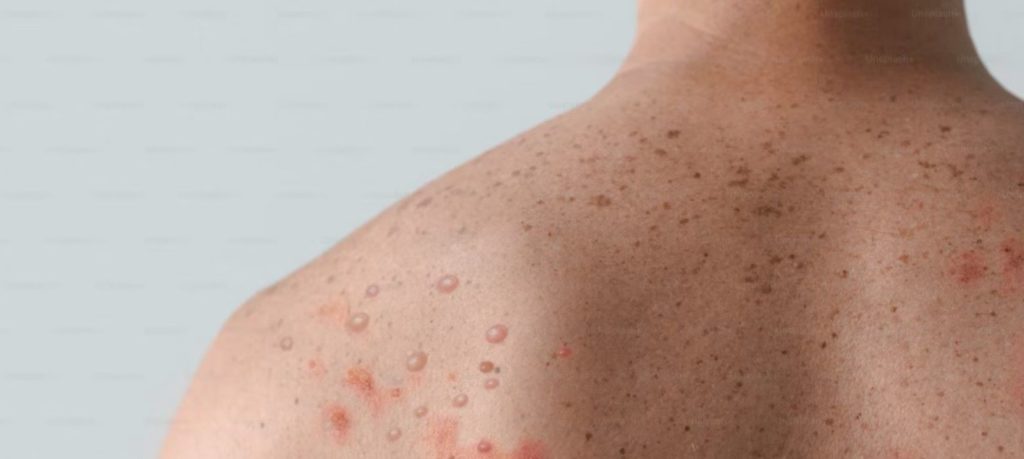Fragrance Allergens on Cosmetic Labels: A Recent Regulatory Update
In recent weeks, a significant regulatory change has taken place in the cosmetics industry. The European Union has introduced new fragrance allergens, in addition to the existing 26, that must now be listed on the labels of cosmetic products. In this article, we will delve into what these fragrance allergens are and what this new development means for the industry.
Understanding Cosmetic Allergens: What are they?
Allergens are molecules, whether chemical, natural, or synthetic. They are commonly found in fragrances, odorous mixtures, and other blends, including plant extracts. Often, these allergens play a significant role in imparting the fragrant notes of perfumes.
While these substances are harmless to the majority, they can pose dangers to certain predisposed individuals. For these individuals, exposure to cosmetic allergens can lead to allergic reactions, which can range from mild to severe. It’s crucial to understand that allergens themselves aren’t inherently dangerous, but they can become so for those who are susceptible.
In essence, any substance has the potential to be an allergen. Theoretically, anyone could be allergic to anything. However, there are specific molecules known to more commonly trigger allergic responses in certain individuals.
What is an Allergy? An Overview
An allergy occurs when the immune system reacts excessively to substances typically considered harmless. These substances are known as allergens. The immune system’s primary job is to protect the body against harmful intruders, such as viruses and bacteria. It does this by spotting unique parts of these invaders, seeing them as foreign, and taking steps to remove them.
When the immune system encounters allergens like pollen, it prompts mast cells to release chemicals, notably histamine and heparin. These chemicals make blood vessels more porous, facilitating the transport of immune cells to tackle the perceived threat.
Yet, sometimes the immune system missteps. Through a process termed “sensitization,” it can mistake innocuous substances as harmful. This error can lead to uncomfortable reactions in some people, including skin rashes, eczema, and dermatitis. These reactions are the immune system’s efforts to protect the body from what it mistakenly perceives as a threat.
Hygiene and Allergies: A Connection?
Why the immune system is dysregulated in some individuals remains largely an enigma. One prevalent theory suggests that extreme hygiene might hinder the immune system’s ability to discern between truly harmful and benign substances. This might cause the system to overreact to substances that are generally harmless.
However, recent studies have refuted this theory. Notably, research led by Professor Sally Bloomfield from the London School of Hygiene and Tropical Medicine, who has dedicated years to studying the correlation between hygiene and the immune system, has firmly debunked this hypothesis.
Professor Bloomfield says, “While children need to be exposed to the microbiota of their mothers, siblings, and the natural environment, it is much less important for them to be exposed to the unnatural microbiota of modern homes.”
The hygiene theory is grounded in the valid premise that our immune system’s development and regulation are influenced by the microorganisms we encounter, vital for establishing a healthy intestinal microbiota. However, the theory begins to diverge from reality when it criticises our modern, industrialised lifestyles for being “overly clean” or when it suggests that exposing children to potentially harmful pathogens is beneficial. It’s essential to note that the bacteria found in today’s homes differ significantly from those in natural environments.
Moreover, researchers have emphasised that when epidemiologists find correlations between household cleanliness and health issues like allergies, the root concern isn’t merely the cleanliness or lack of microorganisms. It’s more about the frequent and close contact with cleaning agents, a situation which, in some instances, the Covid-19 pandemic has exacerbated.
Skin Allergies: Understanding the Basics

Based on the new regulations regarding cosmetic allergens in the EU, it’s estimated that between 1 and 9% of the population suffers from allergies, a statistic that has remained relatively consistent over the years. The majority of allergic reactions attributed to cosmetics result in contact dermatitis. Symptoms typically include redness, blisters, peeling, itching, abrasions, and crusts, often accompanied by varying degrees of itchiness.
It’s crucial to note that cosmetics aren’t the only culprits behind allergies. People can also react to detergents and even natural factors like contact with certain plants and flowers. The initial skin reaction to an allergen can be highly unpredictable; it’s uncertain whether someone will develop an allergy upon first exposure to a particular substance. However, once an allergy manifests, it persists for life, activating whenever the individual encounters that specific allergen or a set of allergens. Consequently, those with known allergies are well-versed in the threats posed by their specific allergens.
For precise identification of the allergenic substances, the Patch Test is recommended. This allergy test, administered at specialised medical centres under professional supervision, pinpoints the exact cosmetic allergens triggering reactions in an individual. When allergic contact dermatitis occurs, it should be managed with prescribed medications. However, the best prevention, once the allergenic substance is known, is to avoid contact with it altogether.
Regulatory Updates in Cosmetics: Addressing Allergies and the Addition of 56 New Allergens
The primary method to prevent allergic reactions in individuals predisposed to allergies is to clearly inform them about common allergens in products. The EU Cosmetics Regulation 1223/2009, which you can reference for a comprehensive version, lists substances identified as the most common allergens. These allergens must be declared on the labels of cosmetic products. By doing so, individuals who are aware of their allergies or have a tendency towards allergic reactions can read the labels and discern the presence of known or potential allergens. This knowledge empowers them to make informed choices and avoid products that might trigger an allergic response.
It’s crucial to understand that cosmetic products containing these allergens aren’t inherently harmful or banned. For the majority of people who don’t suffer from allergies, these ingredients are harmless. The only caveat is that those with known allergies should refrain from using such products.
Recently, on 26 July 2023, the European Commission expanded the pre-existing list of 24 substances with an update. The COMMISSION REGULATION (EU) 2023/1545 from 26 July 2023 modifies Regulation (EC) No 1223/2009 in terms of labelling fragrance allergens in cosmetic products. With this update, 56 new substances and extracts have been added, having been recognized as potential allergens for sensitive individuals.
Labelling rules for fragrance allergens are an integral part of the broader labelling of cosmetics in Europe. These regulations, specified under the EU Cosmetics Regulation (EC) No 1223/2009, ensure transparency and consumer safety by requiring manufacturers to disclose allergenic compounds in their products. This comprehensive approach enhances informed choices, fostering a trustworthy cosmetics market across Europe.
The SCCS’s Stand on Cosmetic Allergens

Back in 2012, the Scientific Committee on Consumer Safety (SCCS) identified that, apart from the known 24 allergens (initially 26, but two were subsequently removed due to their associated dangers beyond just allergies), many other substances and mixtures could act as potential allergens. Notably, these weren’t always clearly indicated on product labels. For a detailed understanding, you can refer to the SCCS’s official opinion on this matter.
Acknowledging this oversight, the European Union’s recent allergen regulation seeks to bridge this information gap. It ensures that those susceptible to allergies are well-informed about ingredients that may pose a risk. By mandating the disclosure of these allergens on product labels, consumers will now be equipped with the knowledge of recognized allergens that had, until now, been overlooked by legal standards. This change aims to bolster safety measures and preventive steps for those prone to allergies.
However, the process of updating labels, especially given the vast number of products and the intricacies involved, is undeniably a herculean task for manufacturers. Weighing this against the fact that the allergic population remains a minority and has been fairly consistent in numbers, the regulation introduces a phased approach. It allows a 3-year transition for new products and a 5-year transition for existing products. This means that by July 2028, the regulation is expected to be in full swing.
What is the Complete List of Allergens in Cosmetics?
As is standard, cosmetic allergens must be listed on the label if their concentration exceeds a specified threshold.
- 0.01% in rinse-off products (e.g. soaps, shampoos),
- 0.001% in leave-on products (e.g. creams).
This is the complete list:
- Alpha-Isomethyl Ionone,
- Amyl Cinnamal,
- Amyl Cinnamyl Alcohol,
- Anise Alcohol,
- Benzyl Alcohol,
- Benzyl Benzoate,
- Benzyl Cinnamate,
- Benzyl Salicylate,
- Cinnamal,
- Cinnamyl Alcohol,
- Citral,
- Citronellol,
- Coumarin,
- Eugenol,
- Evernia Prunastri Extract,
- Evernia Furfuracea Extract,
- Farnesol,
- Geraniol,
- Hexyl Cinnamal,
- Hydroxycitronellal,
- Isoeugenol,
- Limonene,
- Linalool,
- Methyl 2-Octynoate,
- Pinus Mugo,
- Pinus Pumila,
- Cedrus Atlantica Oil/Extract,
- Turpentine,
- Alpha-Terpinene,
- Terpinolene,
- Myroxylon Pereirae Oil/Extract,
- Rose Ketones,
- 3-Propylidenephthalide,
- Lippia Citriodora Absolute,
- Methyl Salicylate,
- Acetyl Cedrene,
- Amyl Salicylate,
- Anethole,
- Benzaldehyde,
- Camphor,
- Beta-Caryophyllene,
- Carvone,
- Dimethyl Phenethyl Acetate,
- Hexadecanolactone,
- Hexamethylindanopyran,
- Linalyl Acetate,
- Menthol,
- Trimethylcyclopentenyl Methylisopentenol,
- Salicylaldehyde,
- Santalol,
- Sclareol,
- Terpineol,
- Tetramethyl acetyloctahydronaphthalenes,
- Trimethylbenzenepropanol,
- Vanillin,
- Cananga Odorata Oil/Extract,
- Cinnamomum Cassia Leaf Oil,
- Cinnamomum Zeylanicum Bark Oil,
- Citrus Aurantium Flower Oil,
- Citrus Aurantium Peel Oil,
- Citrus Aurantium Bergamia Peel Oil,
- Citrus Limon Peel Oil,
- Lemongrass Oil,
- Eucalyptus Globulus Oil,
- Eugenia Caryophyllus Oil,
- Jasmine Oil/Extract,
- Juniperus Virginiana Oil,
- Laurus Nobilis Leaf Oil,
- Lavandula Oil/Extract,
- Mentha Piperita Oil,
- Mentha Viridis Leaf Oil,
- Narcissus Extract,
- Pelargonium Graveolens Flower Oil,
- Pogostemon Cablin Oil,
- Rose Flower Oil/Extract,
- Santalum Album Oil,
- Eugenyl Acetate,
- Geranyl Acetate,
- Isoeugenyl Acetate,
- Pinene.
After these changes, there will be 371 entries in Annex II.
What Should be Done by the Responsible Person Now?
It’s essential to note that every supplier of fragrances or essential oils is undoubtedly informed about these regulatory changes. They are likely updating their allergen lists for each fragrance to share with their clientele. Therefore, the main task for the Responsible Person is to patiently await these newly updated documents. Considering the substantial transitional period, it would also be prudent for them to proactively approach suppliers, requesting the updated lists as soon as they are available.
Conclusion on Cosmetic Allergens

Consumer safety stands at the forefront of Regulation 1223/2009, guiding the cosmetic industry. Advances in research have paved the way for deeper insights into potential cosmetic allergens. This recent update enhances consumer protection, emphasising that laws adapt and grow in line with scientific progress.
It’s crucial to underline that cosmetic products containing these allergens are of high quality. They are perfectly safe for individuals without specific allergies and even for those with allergies, provided they aren’t allergic to the mentioned substances. Such products, like all others, adhere to the comprehensive guidelines of the Regulation, ensuring their high safety standards for consumers.
Remember, each cosmetic product undergoes thorough scrutiny by a Safety Assessor. They curate a Cosmetic Dossier, and the manufacturing facilities are consistently monitored by authorities. This diligence ensures the safety of each product at every stage. For a deeper dive into this, refer to our detailed article on regulatory inspections for cosmetic products.
Labelling allergenic substances shouldn’t be perceived as a drawback for cosmetics. Instead, view it as heightened care for vulnerable segments of the population. This enables them to relish the myriad benefits cosmetics provide daily without fear.
Uncertain about your product’s labelling or have questions? Reach out to us, and we’ll guide you through this pivotal update!



